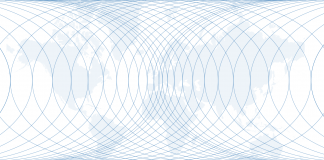It has been 22 years since the 9/11 attack that destroyed the World Trade Center buildings and a wing of the Pentagon and launched a string of American actions that were both inevitable and ultimately ineffective.
The attack was brilliant in conception. At its core were al-Qaida members who were prepared to go to their certain deaths. They entered the country through legal means about a year before the attack and received a flow of money for their operation. The most important part of the operation was the seizure of airliners that would serve as bombs, with the impact of the aircraft and the ignition of jet fuel serving as the agents of destruction.
Their mission required each of the four aircraft to have at least one pilot, but none of the plotters knew how to fly a plane. Apparently, the training could not take place in the Middle East because, considering the number of trainees, they might be detected. The plan therefore was to obtain flight training in the U.S., where private flying schools are common and where the hijackers would be hidden amid the large number of trainees. The men assigned to the mission had only to fly and navigate planes already airborne. They did not need to know how to take off or land. This oddity might have triggered concern, but the threat was inconceivable at the time.
The planes they chose to hijack seemed to have been thoughtfully selected. The hijackers wanted the aircraft to hit their targets as close to the same time as possible. If there was a wide gap, air defenses would be alerted and scrambled. Since radio contact would not be allowed or the voice would have had a foreign accent, the attackers needed to select planes that could hit their targets before interceptors could take off. When you look at the type of aircraft selected, they were all single-aisle planes, except the one that crashed in Pennsylvania. Taking control of the planes was fairly easy, since the attackers had weapons. (Pre-baggage check screening started after 9/11.) Once the pilots were incapacitated, the attackers took the controls and began changing course to the target. The danger at that point was that passengers, realizing what was happening, would surge toward the cockpit. Given the small number of attackers on board they could be overwhelmed, but a single-aisle plane allowed them to hold back their potential adversaries more easily than a dual-aisle plane. This was likely a deliberate choice.
Their targets were chosen because they were well known, not only in America but especially in the Middle East. Their intention in striking the U.S. was not to paralyze it, since that couldn’t happen anyway. The attack was directed toward the Muslim world, and therefore the significance of the targets had to be widely recognized. The World Trade Center, the Pentagon and another unconfirmed location were chosen. There has been much discussion of what was the target of the fourth plane. My guess, based on the fact that they picked large, visible targets, would be the Capitol, but whatever it was it seems the hijacking failed after the attackers were overwhelmed by the passengers.
As I said, the intent of the attack was to influence Muslims in the Middle East. Al-Qaida saw many of the governments in the region as betraying Islamic principles. It wanted to trigger uprisings against them. In their view, the populations agreed with their loathing of the regimes but were paralyzed by the view that American power was supporting these regimes. If al-Qaida could demonstrate that American power was an illusion and that Islamic bravery could attack the most important U.S. buildings, these populations might conclude that their own regimes – backed, they believed, by U.S. force – could be overthrown. In other words, the 9/11 attack used the U.S. as a platform to demonstrate American weakness to the Muslim world.
But 9/11 did not bring down the American regime. It did trigger U.S. overt and covert operations that in retrospect had more impact on the region than 9/11 had, garnering criticism from many. But these criticisms must be put in perspective. First, the idea that the U.S. would not act against al-Qaida was impossible. Passive speechmaking wouldn’t have been enough of a response politically. The idea that the U.S. could not protect itself had to be countered, even if true. The rage, and fear, of Americans at that moment had to be considered. This was a fundamental reality.
Second, anyone who wasn’t frightened in the wake of 9/11 was not in touch with reality. U.S. intelligence on al-Qaida was clearly inadequate, and this meant that we had no reason not to believe that they had far more deadly weapons, perhaps poison gas or even nuclear weapons. A repeat of the 9/11 attack was possible – even likely – in the minds of some analysts. Given that al-Qaida was hoping that the Americans would attack to prove their hostility to the masses, the U.S. leadership was in one of the most complex positions imaginable. The fear in the United States was palpable and rational. I recall being in Washington three days after 9/11 and staying in the Army and Navy Club, about a couple of blocks from the White House. I was unable to sleep and trying to imagine whether I would feel a nuclear strike or my consciousness would simply disappear. It was a time when the worst-case scenario was the only reasonable consideration.
The 9/11 operation was superb. Men who knew they were going to die mapped out and implemented a major covert operation on selected targets while remaining unnoticed by an excellent security system. But operationally impressive work did not result in the political results they dreamed of. There was no uprising, and regimes came and went in the normal cadence. There was no upheaval and no end to history.






